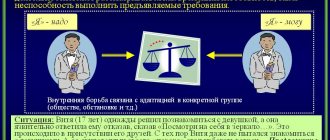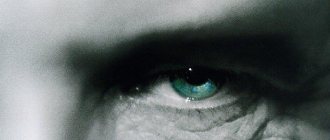What is distress?
Distress is a stage in the development of stress, which manifests itself in the depletion of an individual’s emotional resource. Under the influence of this state, a person is deprived of the opportunity to perform volitional acts, awareness recedes into the background, and adaptive abilities are reduced. This leads to social problems and disruption of health integrity.
Hans Selye (Canadian scientist of Hungarian origin, founder of the theory of stress) understood distress as a state in which the effectiveness of the body’s defense mechanisms decreases. Stress encourages a person to fight discomfort. Also in the researcher’s works it was said that exhaustion is the third stage of stress. Based on this, we can conclude that stress can transform into distress.
Distress is a distinct form of stress that can pose a threat to the individual. At the same time, the founder of the theory is firmly convinced that stress brings benefits to the body. However, distress is a condition that results from the body's inability to adapt to changed conditions.
Signs of distress
A distinctive feature of distress is the manifestation of a wide range of feelings and emotions. In total, three groups can be distinguished:
- The initial stage of process development. Most of all, feelings of fear, anxiety, and restlessness are manifested. There is a clear relationship between feelings and thoughts and the event that triggered the distress;
- After this, the person begins to deny his feelings, emotions and the event that caused the distress;
- Further, under the influence of objective factors, the moment of acceptance of what happened comes, and the person understands that he cannot resist the situation. In the future, the person outlines a strategy for overcoming difficulties; this process is greatly influenced by the help and support of outsiders.
Obvious signs of distress include fatigue, irritability, unreasonable aggression, inappropriate reactions to everyday situations, apathy, insomnia and lack of appetite. Under the influence of this state, a person begins to change his preferences and hobbies, and loses interest in life. In some cases, changes affect a person's consciousness.
Practice shows that in most cases people try to overcome the state of psychological exhaustion themselves. However, this approach is fraught with negative consequences that can complicate the situation.
Symptoms
Signs of distress that is acute, that is, occurring suddenly for unforeseen reasons, are difficult to miss. Most often they manifest themselves as somatic reactions, depending on the physiological characteristics of the body:
- Pressure surge;
- Ragged and rapid breathing;
- Blood drains from the skin, causing pallor or red spots to appear;
- Chills, trembling in the hands, in the body;
- Sweating;
- Nausea;
- Pain in the head, heart, muscles.
Symptoms of chronic distress can also be recognized with sufficient observation. These include the following changes:
- A person’s taste habits and appetite change;
- Bad habits appear or intensify;
- Interest in activities that previously brought pleasure fades away. An example is refusal of sexual relations, communication, hobbies, sports;
- Everyone's inherent desire to improve something in their life is lost. The person becomes apathetic, passive, loses his sense of humor;
- From the nervous system, symptoms such as problems with sleep and memory appear. A person begins to worry and fuss over trifles, become nervous, irritable, absent-minded;
- Speech changes for the worse, previously existing problems worsen, slurring, stuttering, and filler words appear;
- Thinking abilities decrease, as attention becomes unstable and focused on the problem.
Possible consequences of chronic distress include:
- Development of neuroses and psychoses;
- Alcoholism, drug addiction;
- Cardiovascular diseases;
- Ulcerative diseases of the gastrointestinal tract.
Causes of distress
People face stress every day, which is common to all living organisms. The only question is why does it transform into distress , and what contributes to this? There is no single answer to this question. The thing is that people react differently to the same problem. In other words, for one person a problem may be a trifle, but for another an insurmountable obstacle.
Psychological trauma can be identified as the main cause of distress This can include both short-term, but strong impacts, and minor impacts that manifested themselves over a long period of time. The main risk group is people with a high level of sensitivity. The cause of distress may be a lack of life experience and instability in the face of constantly changing conditions of the surrounding reality.
Thus, a child, finding himself in difficult conditions, is forced to quickly adapt to them - he develops skills and abilities for independent living, so his level of stability will be higher than that of his peers. And a person who was in the care of his parents until the age of thirty will not be able to cope with even a simple difficulty and will begin to experience stress and negativity. The first case is an independent adult, the second is a dependent adult.
The prerequisite for the occurrence of distress is a person’s system of values and beliefs , his attitude towards life. Adherents of conservatism are afraid of change, and if it occurs, they begin to feel discomfort. Those people who understand that conditions and circumstances change will always successfully adapt to new conditions without damage to their psyche.
Stress
General adaptation syndrome (GAS)
Physiological stress was first described by Hans Selye as a general adaptation syndrome. He began to use the term “stress” later.
“Stress is a nonspecific response of the body to any demand presented to it […] In other words, in addition to the specific effect, all agents affecting us also cause a nonspecific need to carry out adaptive functions and thereby restore a normal state. These functions are independent of specific effects. Non-specific demands imposed by the impact itself are the essence of stress
— Hans Selye, “The Stress of Life”[10]
Back in the 1920s, while studying at the University of Prague, Selye drew attention to the fact that the onset of any infection is the same (fever, weakness, loss of appetite). In this generally known fact, he discerned a special property - the universality, non-specificity of the response to any damage. Experiments on rats have shown that they give the same reaction to both poisoning and heat or cold. Other researchers have found a similar reaction in people who have received extensive burns.
Under stress, along with elements of adaptation to strong stimuli, there are elements of tension and even damage. It was the universality of the “triad of changes” that accompanies stress - a decrease in the thymus, an enlargement of the adrenal cortex and the appearance of hemorrhages and even ulcers in the mucous membrane of the gastrointestinal tract - that allowed G. Selye to put forward a hypothesis about the general adaptation syndrome (GAS), which was later called “stress”. The work was published in 1936 in the journal Nature. Many years of research by G. Selye and his colleagues and followers around the world confirm that stress is a nonspecific basis for many diseases.
Selye identified 3 stages of general adaptation syndrome:
- anxiety reaction (mobilization of adaptive capabilities - these capabilities are limited)
- resistance stage
- exhaustion stage
For each stage, characteristic changes in neuroendocrine functioning are described.
Initially, Selye viewed stress solely as a destructive, negative phenomenon, but later Selye writes:
Stress is a nonspecific response of the body to any demand presented to it. […] From the point of view of the stress response, it does not matter whether the situation we are faced with is pleasant or unpleasant. All that matters is the intensity of the need for restructuring or adaptation.
— Hans Selye, “The Stress of Life”[10]
Later, Selye additionally introduced the concept of “positive stress” ( Eustress
), and designated “negative stress” as
distress
.
Adaptive energy
Developing the concept of stress, G. Selye in 1938[11] proposed the concept of short-term and medium-term adaptation (adaptation of adult individuals at times noticeably shorter than life time), based on the concept of adaptive energy.
The concept of adaptation energy allows us to describe individual adaptation differences as differences in the distribution of adaptation energy along the structural and functional scheme of the adaptation system (as well as in the amount of this energy). This scheme itself may be complex, but it is uniform within a given species (to be specific, Selye considers adults of the same sex). In a number of specific physiological experiments, Selye showed that the redistribution of this resource increases resistance to some factors and at the same time reduces resistance to others. The concept of adaptation energy has acquired an “axiomatic” form [12] (quotes mean that these axioms do not provide true axiomatics in the mathematical sense):
- Adaptive energy is available in limited quantities, given from birth.
- There is an upper limit on the amount of adaptive energy that can be used by an individual at any point in (discrete) time. This amount can be concentrated in one direction or distributed among different directions in response to multiple environmental challenges.
- There is a threshold of exposure to an external factor that must be crossed to trigger an adaptive response.
- Adaptive energy can be active at two different levels of competence: the primary level, at which the response is generated in response to a high level of factor, with high costs of adaptive energy, and the secondary level, at which the response is generated at a low level of influence, with low costs of adaptive energy.
In 1952, Goldstone[13] proposed a critique and development of Selye's theory. He complements Selye's laboratory experiments with descriptions of typical clinical cases that confirm this picture. Goldstone argues that this description of adaptation through adaptation energy is extremely useful. At the same time, he refutes the first axiom, according to which adaptive energy is available in limited quantities, given from birth.
Goldstone proposes the concept of a constant production of adaptive energy, which can also be accumulated and stored in limited quantities, and demonstrates that this concept describes Selye's experiments even better than the original idea of constant adaptive capital. He also draws on the work of Carrel[14], who studied adaptation to stimuli below the anxiety threshold and showed that such exercises nonspecifically enhance (“awaken”) the general adaptive response, which contradicts Selye’s purely costly concept, the shortcomings of which he later tried to overcome in his concept of eustress.
Goldstone argues that constantly presenting weak negative stimuli are constantly encountered and overcome by ongoing adaptation. The initializing effect of stimuli is to awaken the adaptation system and bring it into a state of readiness for a faster and more effective response. Stronger stimuli may require more adaptive energy expenditure than is produced; then the adaptive reserve is put into action, and if it is used up, then death occurs. There is a maximum possible rate of consumption of adaptive energy, and at this maximum the body cannot cope with any additional stimulus. Describes how one stimulus can influence an individual's ability to adapt to other stimuli; the outcome depends on the specific situation:
- A patient who cannot cope with an illness is able to overcome it after a moderate additional stimulus.
- In the process of adapting to this new stimulus, he may acquire the ability to respond more intensely to all stimuli.
- As a result of exposure to a strong stimulus, the patient may be unable to adapt to the additional strong stimulus.
- If he successfully adapts to the disease, then this adaptation can be destroyed by exposure to a second strong stimulus.
- For some diseases (particularly diseases of adaptation), exposure to a fresh, strong stimulus can overcome the disease. This exposure is always associated with risk, but it can also normalize the functioning of the adaptation system.
Goldstone's axiom.
Adaptive energy can be produced, although its production declines in old age, and it can also be stored in the form of adaptive capital, although the capacity for this capital is limited. If an individual spends his adaptive energy faster than he produces, then he spends his adaptive capital and dies when it is completely exhausted.
Modern models of adaptation and adaptive energy[15] are based on the idea of limiting factors (first proposed in 1828 by K. Spengler and gained fame in application to agrocenoses after the work of von Liebig, 1840) and evolutionary principles of optimality, originating from the works of J.B. S. Haldane. Adaptation is presented as an evolutionarily optimal system for distributing adaptive energy to neutralize the most harmful factors.
Further development of stress theory
It is shown that stress (as a classic nonspecific reaction in the description of G. Selye) is just one of the reactions that make up the general system of nonspecific adaptive reactions of the body, since the body, as a more sensitive system than its constituent subsystems, reacts to conditions of different strength and quality stimuli that cause fluctuations in homeostasis within, first of all, normal levels, and stress is a reaction to strong stimuli.
The effect of group stress has been described
, manifested in groups and populations under difficult living conditions: in a typical situation, with an increase in the adaptive load, the level of correlations increases, and as a result of successful adaptation, it decreases. The greatest information about the degree of adaptation of a population to extreme or simply changed conditions is provided by correlations between physiological parameters. Based on the effect, a correlation adaptometry method was created [16]. The method is systematically used in monitoring problems[17].
The use of multiple regression has proven the ability to predict stress levels long before it occurs in order to identify individuals (or groups of individuals) who are particularly susceptible to stress. This method allows not only to identify in advance the level of stress resistance of a person, but also to predict with high accuracy the indicators of the level of mental and somatic stress of people under stress [18].
Blood sugar
Under the influence of stress, regardless of the nature of the latter (physical or psychological), a sharp release of adrenaline into the blood occurs, which in turn leads to the breakdown of glycogen in the liver and the conversion of the latter into glucose entering the bloodstream. As a result, blood sugar levels rise sharply, which poses a danger for patients with diabetes[19].
Types of distress
- Psychological and emotional distress is the result of emotional experiences arising from problems in the social sphere, while the manifestation of such stress has a negative impact on the relationship between the individual and the environment;
- Physiological distress is caused by the influence of negative external conditions. The reason may also be the lack of ability to satisfy physiological needs. Under such conditions, disturbances in the functioning of body systems appear, and insomnia appears. Even if a person is sure that he has gotten rid of a harmful factor, the body will be in a state of distress for a long period of time;
- Chronic distress is not perceived by the individual as a danger; this condition manifests itself every day and gradually becomes the norm. Depression, suicidal tendencies and a nervous breakdown can be considered as negative consequences of an advanced form of this type of distress.
Diagnostics
In psychology, there are a number of tests that allow you to independently diagnose the level of stress, depression and anxiety. The main ones:
- L. Reader's test. Determination of the level of psychosocial stress;
- Beck Depression Inventory;
- Spielberger and Hanin test. Assessment of the level of reactive and personal anxiety;
- Sheehan Anxiety Scale. Help in diagnosing anxiety disorders.
All these tests are quite simple and straightforward. With their help, you can assess your condition and decide whether you need specialist help.
Prevention of distress
Prevention has as its main goal the identification of the causes of distress and their elimination. Among the most common reasons are conflicts, lack of opportunities for professional fulfillment, unmet needs, and unrealized personal and creative potential. As part of working with a person, the emphasis is on analyzing the causes, dividing them into causes controlled by the individual and those that do not depend on the individual.
Prevention and management of distress highlights the implementation of an individual approach. The causes of stress are subjective , and therefore there is no opportunity to develop and implement a plan that is universal for all people.
Psychological relief on a regular basis and stress relief can become a fundamental basis for the prevention of distress. When working with a person, prevention methods are selected individually. It is important to use as many senses as possible. Common relaxation methods include proper sleep and nutrition, and taking vitamin complexes. The main goal is to restore the internal resources of the individual, preparing the body for new loads.
If you notice signs of distress, it is best to contact a psychologist in advance, who will analyze the situation and help you find a way out.









